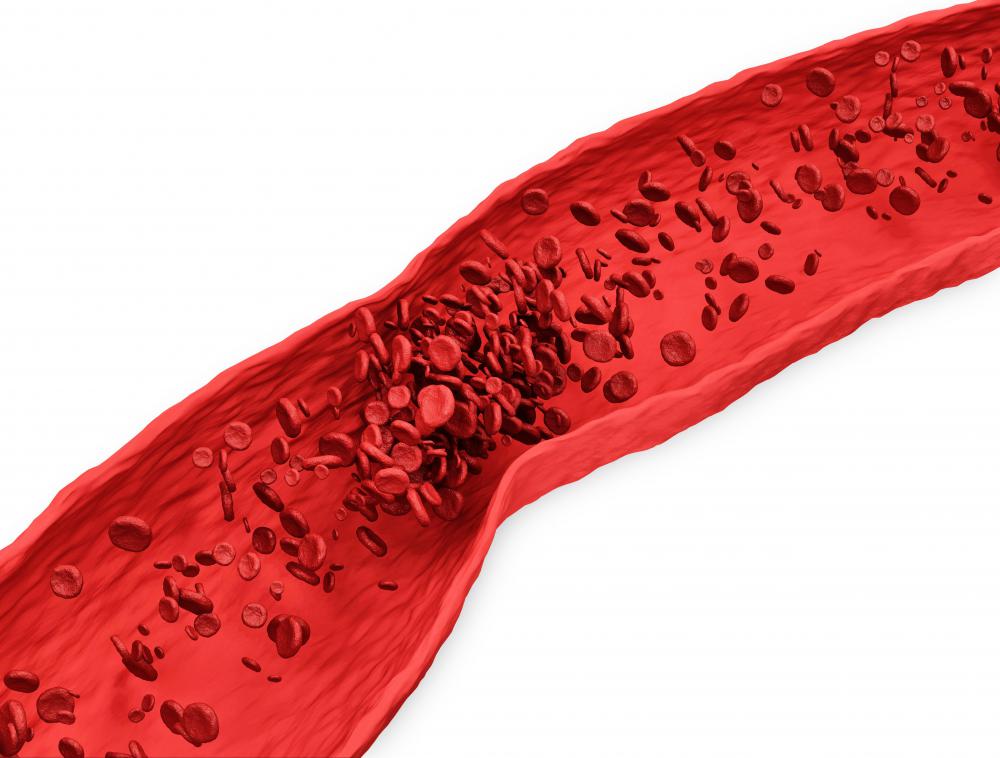At TheHealthBoard, we're committed to delivering accurate, trustworthy information. Our expert-authored content is rigorously fact-checked and sourced from credible authorities. Discover how we uphold the highest standards in providing you with reliable knowledge.
What Is Bilateral Pulmonary Embolism?
Bilateral pulmonary embolism (BPE) is a blockage in at least one artery in both lungs, usually as the result of a blood clot. Most people who suffer from a pulmonary embolism develop it in both lungs, making the bilateral variety the most common. Typical symptoms include shortness of breath, a cough that brings up bloody discharge, and sudden chest pain. This condition can be fatal but the prognosis is good for patients who get immediate medical treatment, such as anti-clotting medication. Preventing blood clots from forming — by not smoking, maintaining a healthy weight and avoiding being still for long periods of time — can reduce the risk of this kind of embolism.
One of the most common symptoms of bilateral pulmonary embolism is shortness of breath that occurs suddenly, even when the patient is sitting down. Chest pain is another common sign and, while it often becomes worse during exertion, it is still present when the patient is at rest. Some patients also develop a cough that brings up bloody sputum, which is sometimes accompanied by wheezing, clammy skin or excessive sweat. The blood clot most often comes from the legs, so this area of the body may swell up and the pulse frequently becomes weak. Patients are advised to seek immediate medical treatment, because this condition can result in death when it is not treated.

The typical treatment for BPE is medication, with anticoagulants being the most popular option. Warfarin and heparin are the two most common types of anticoagulants, but they may cause excessive bruising and bleeding gums while they take effect. Clot dissolvers are another option and can be given when the clot needs to be dissolved immediately to prevent death, but this medication results in serious bleeding. Some doctors opt to surgically remove particularly large clots or place a filter in the inferior vena cava to stop clots from being transported from the legs to the lungs.

People who are perfectly healthy can experience BPE, but there are risk factors that make some people more likely than others to suffer from this condition. For example, those on bed rest or on long trips are at risk of having their blood flow slow down enough to allow clots, which is why staying immobile for several hours is not advised.
Those who smoke, are overweight or are taking estrogen through birth control pills or hormone therapy are also at higher risk for BPE. On the other hand, some people cannot help being in the high-risk category for this condition, because older people and those with a family history of blood clots are more likely than average to get it. Additionally, both surgery and medical conditions, such as cancer, pregnancy and heart disease, can increase the chances of a person suffering from bilateral pulmonary embolism.
AS FEATURED ON:
AS FEATURED ON:















Discussion Comments
Having a risk of pulmonary embolism during pregnancy is the ultimate nightmare scenario. I can't even imagine how you'd start to treat that without harming the baby.
My friend's mother was recovering from breast cancer and was doing well, but the medication she was on made blood clots more likely, and she passed away very suddenly from a pulmonary embolism. It was unexpected because she had been doing very well after chemotherapy.
This is one of those conditions no one wants to think about getting. I'm just glad there are treatments for it that actually work. I knew people on long plane trips were at risk for deep vein thrombosis, but I never thought about that translating into a bilateral pulmonary embolism. I thought a blood clot in the legs was bad enough!
Post your comments